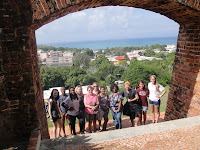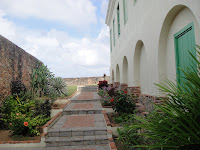
Vieques is Not for Sale
By Rachel Bradley
Vieques was home to many slaves that worked their luscious sugar cane crops, which was the main economic income. About 350 slaves lived, worked, and died on the island. Slavery was finally abolished in Puerto Rico in 1873. The French also fought for territory of the island. The fort was never involved in battle, but rather used as a prison. In 1898 Vieques was part of the United States with Puerto Rico, and by the Jones Act of 1917 all Puerto Ricans were born United States citizens.
After three-fourths of Vieques was taken over by the U.S, they began sending their navy over around the 1940s to do bomb and nuclear experimentation. It devastated the island’s breathtaking flora and fauna and caused cancer rates among the residents to skyrocket.
Today, after a long history of battle between islanders, invaders, and the United States Navy, Vieques is back on its feet trying to improve their land and keep it thriving. Much of this was done with the help of the Fortin Conde de Mirasol Museum coordinator, Robert Rabin. He came to the island from Boston at the age of 25 for three weeks of research in which he said, “three weeks turned into three decades.”
Rabin had made it a passion to keep, what he calls, “the most beautiful view in all of Vieques” standing, its culture strong, and the U.S. Navy out (photo: top below). In 1993 he and his wife joined a spearhead movement to keep the Navy out due to the health concerns of the islanders. He even spent six months in prison due to a nonviolent practice where they sat in the Navy’s bomb range. This was his third arrest. Finally in 2003 the Navy listened to the protestors and moved out. Rabin is a strong advocate for the health and safety of the island and its people, and now helps the museum that holds the archives and history of this land and its people (photo: below, center).
The museum and the fort lie on a high point of Vieques overlooking the island's blue seas and green hills. It catches the fresh breeze blowing in from the water as you look down at specs of coral, pink, yellow, and baby blue houses and flowers (photo: below, bottom). The museum stands high in the fort with a sense of safety and preservation of a culture.



No comments:
Post a Comment